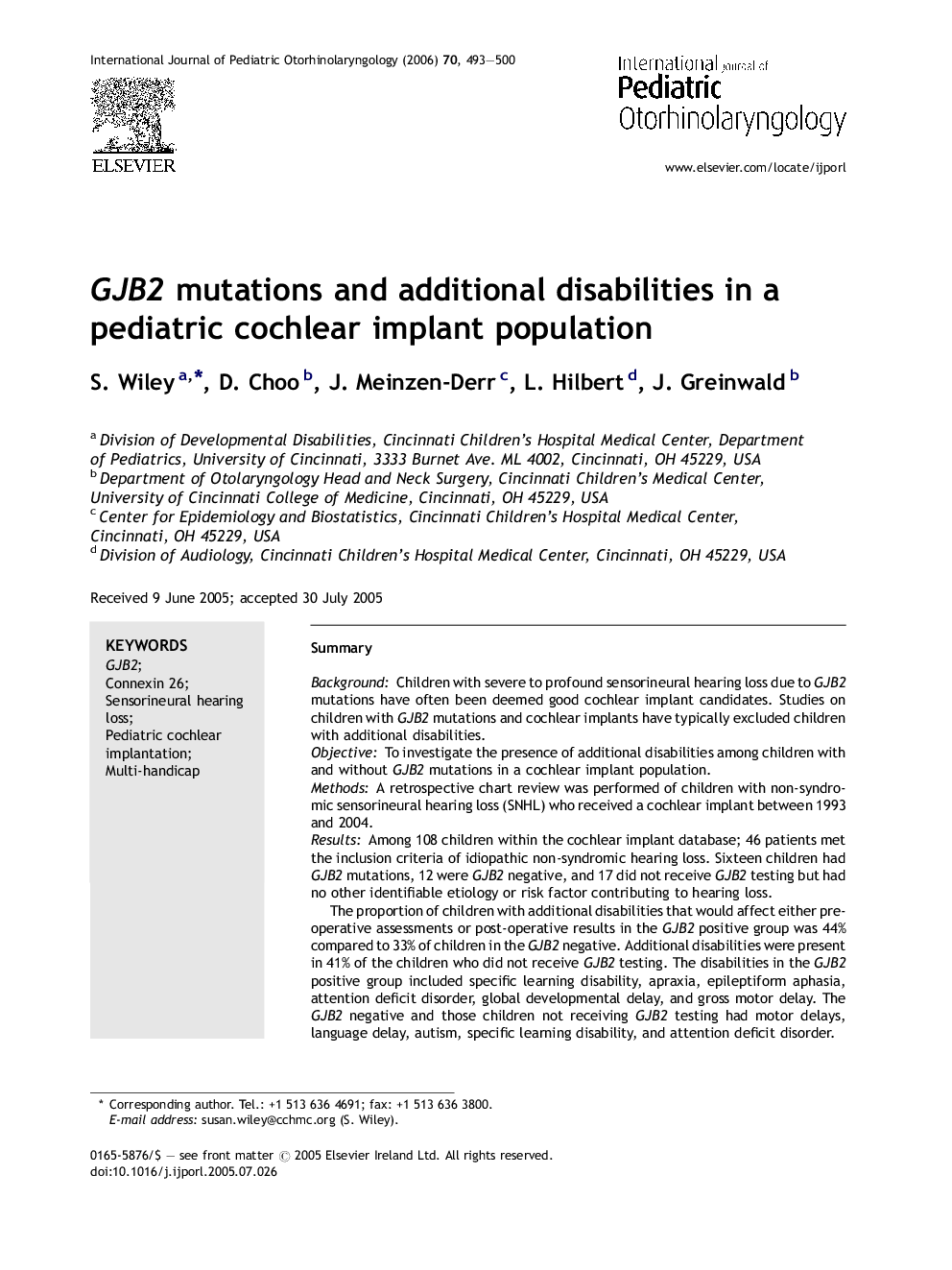| کد مقاله | کد نشریه | سال انتشار | مقاله انگلیسی | نسخه تمام متن |
|---|---|---|---|---|
| 4115225 | 1606109 | 2006 | 8 صفحه PDF | دانلود رایگان |

SummaryBackgroundChildren with severe to profound sensorineural hearing loss due to GJB2 mutations have often been deemed good cochlear implant candidates. Studies on children with GJB2 mutations and cochlear implants have typically excluded children with additional disabilities.ObjectiveTo investigate the presence of additional disabilities among children with and without GJB2 mutations in a cochlear implant population.MethodsA retrospective chart review was performed of children with non-syndromic sensorineural hearing loss (SNHL) who received a cochlear implant between 1993 and 2004.ResultsAmong 108 children within the cochlear implant database; 46 patients met the inclusion criteria of idiopathic non-syndromic hearing loss. Sixteen children had GJB2 mutations, 12 were GJB2 negative, and 17 did not receive GJB2 testing but had no other identifiable etiology or risk factor contributing to hearing loss.The proportion of children with additional disabilities that would affect either pre-operative assessments or post-operative results in the GJB2 positive group was 44% compared to 33% of children in the GJB2 negative. Additional disabilities were present in 41% of the children who did not receive GJB2 testing. The disabilities in the GJB2 positive group included specific learning disability, apraxia, epileptiform aphasia, attention deficit disorder, global developmental delay, and gross motor delay. The GJB2 negative and those children not receiving GJB2 testing had motor delays, language delay, autism, specific learning disability, and attention deficit disorder.The proportion of children with at least 6 months CI use who relied on oral communication was 62% in the GJB2 positive group, 66% in the GJB2 negative group, and 38% in the untested group. A majority of the genetic alleles were 35delG (81%) and 10 of 16 (63%) patients with GJB2 mutations were homozygous 35delG. The rate of developmental diagnoses was similar in patients with homozygous GJB2 compared to compound heterozygous genotypes.ConclusionsThe presence of biallelic GJB2 mutations does not rule out non-hearing related disorders that can have an effect on speech, language and learning. Forty-four percent of children with GJB2 mutations had other conditions that could directly affect pre-implant evaluation and post-implant performance. This rate is similar to the reported prevalence among the overall population of children with hearing loss. All children should have a comprehensive evaluation of development and behavior regardless of the etiology of hearing loss.
Journal: International Journal of Pediatric Otorhinolaryngology - Volume 70, Issue 3, March 2006, Pages 493–500